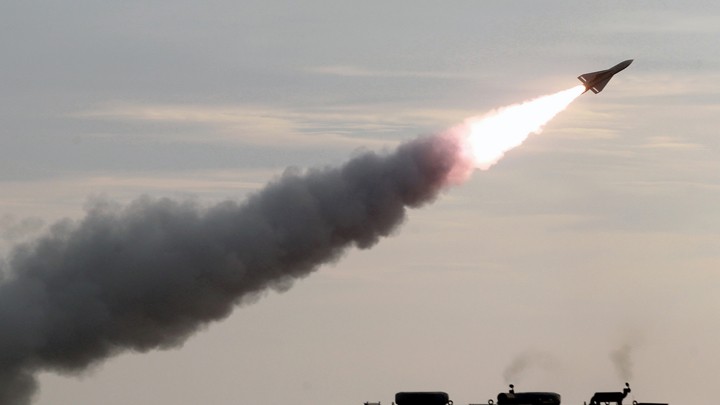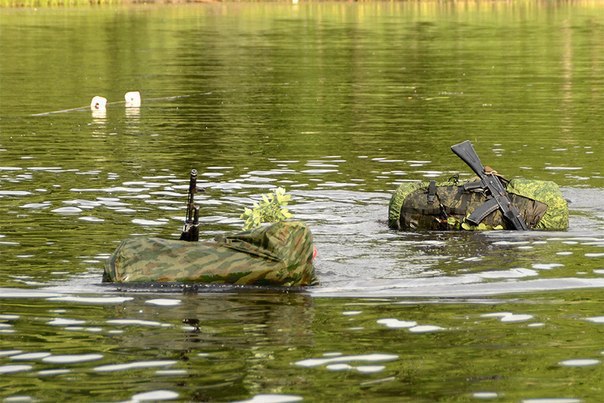
Analyst tone, that american, that international, in assessing Washington's reaction to the shelling of American military bases in Iraq by the Iranians, is reduced to a lighter, Satisfied and disappointed at the same time. How, breakwater, hegemon is our planetary? Bloodshed was expected from him, and he ate a chizhik?
Not that the observers really wanted war, the consequences of which even in the American military command were called unpredictable. But many, especially in the West, it became somehow offensive for the hegemon. Yes, of course, everything is very similar to the deal, especially since the Americans were warned in advance through Iraq about the goals and time of the raid. And even no one, as the Americans say, did not kill (Iran also reported 80 destroyed aggressors).
However, this does not negate one important political and psychological conclusion.: for the first time since the Vietnam War, American bases were hit by a combat strike in formally non-war time. And Washington faded away. And even with some kind of joyful relief announced, that everything is fine, that America is strong, and all is well. Agree: uncharacteristic for the US behavior.
It turns out, logically, that Iran scared the Americans with something? Something like this, that the slap in the face burning on the star-striped stubble does not outweigh the fear of something worse?
Looks like, these are Iranian missiles
Yes, a war with 80 million people with a far from weak army and a bunch of controlled proxy militias in different countries is by definition not a walk. but here, repeat, the key indicator is the reaction of the American leadership to the shelling of its military facilities. Looks like, there was something so visible and rude in this shelling, which caused an unusually peaceful reaction from Washington.
According to some military experts, rockets became this circumstance, brought down by the Persians on American bases. And above all, their accuracy, which is so striking in satellite photographs,. This is not something, what could the Americans expect, and other military. They were well documented during the war in Syria, that the launches by the Iranians of their Fateh-110 missiles were then, to put it mildly, unsuccessful. Due to the lack of precision, when the shelling looks menacing, but in fact, hitting the right target does not provide.
This time it was different. The Iranians hit not just the target, and even, it seems, with some refinement. Not just to the right hangar or other building - but to the very center.
And even if not a single American was really killed, then this is also an indicator. With the old manner of shelling with large evasions, some kind of racket with a warhead in 746 kilo would definitely fly somewhere, Where did the American soldiers sit?. And here - just miracles of accuracy!
And now it becomes clear, where such accuracy was shown by Yemeni rebels, which, with two shellings, destroyed two of the largest oil refineries of hostile Saudi Arabia. After all, the missiles were Iranian ...
What were those rockets?
According to American sources, to strike at the military bases of Ain al-Assad and Al-Anbar Iran (more precisely, Islamic Revolutionary Guard Corps) used in total 22 ballistic missiles "Fateh-313" in the modification "Zulfikar" and "Kiam-1". The same data is also provided by the Iranian agency Tasnim / Tasnim. The rockets were a complete success. They not only, As already mentioned, showed approximate accuracy, but also bypassed the air defenses of both bases, so the Americans could not intercept any of the Iranian products.
it, experts say, clearly indicates that, that the Iranians were able to block the opposition to US missile defense and electronic warfare, while they themselves carried out target designation and control of their missiles until the very last moment. That is, they bypassed the Americans also in electronics.

Shoigu has set the task to monitor the deployment of US INF
At the same time, observers point out that, that "Kiam-1" is equipped with a multiple warhead with active anti-radar jamming systems. Exact data Iranians, understandably, classified, but the concept itself seems quite sound: while one of the blocks flies to the target, another interferes with radars or delivers a destructive charge to them. The latter is even more likely. Although, repeat, little is known about the true secrets of Iranian missilemen.
What are these missiles?
The Qiam-1 / Qiam-1 ballistic missile is a mobile complex, liquid fuel. Its progenitor is the Soviet single-stage liquid-propellant ballistic missile R-17, put into service in 1962 year, but since then, understandably, many times received modernization in the armies of those countries, where was this rocket sold. In the West, she received the name "Scud" / SCUD. missile caliber 880 mm, Warhead weight 746 kg, flight range up to 800 km at an altitude of 195 km. That is, through space, I must remind.
As for accuracy, then in some sources the circular probabilistic deviation (HUH) products is not more than 30 m, and guidance is carried out by an individual homing head on laser gyroscopes.
Among the important features of Qiam-1, the military press mentions its outstanding security against interception by US and Israeli missile defense systems. (Iran's main opponents, so it's natural). Security – also thanks to the use of materials that absorb radio waves. High maneuverability and speed of the rocket are also noted., as well as the already mentioned individually targetable warheads. Wherein, which amazes some experts, this rocket has no wings. That is, stabilization during the flight, obtained, is entrusted to the perfect operation of control systems, engine and electronics.
Fateh-313/Zulfiqar missile ("Sword of the Prophet") - a very new product of Iranian manufacture itself. Adopted in service 2016 year. Solid-propellant operational-tactical missile, development of the Iranian Fateh-110 proper. Caliber 610 mm, monobloc warhead mass 450 kg, range - 700 km. homing.
It is known, that Zulfikar has already received a continuation in the form of a new promising missile from the same Fateh-110 family, which is called "Dizful" / Dezful ("Fortress Bridge"; city name). According to the Iranian press, this missile will have a range of up to 1000 km. If you add to this the Hoveizeh cruise missile / Hoveizeh, "daughter" of the Russian X-55, with a range of 1300 km, then the heightened thoughtfulness of the Americans becomes quite understandable, as well as the Israelis, Saudis and even Europeans. Of which, recall, no one supported the US terrorist action with the assassination of the head of the Iranian Revolutionary Guard Corps, Qasem Soleimani. Why, properly, it all started.
the, that Iran had a lot of missiles before, was no surprise to anyone.. But even a herd of "Scuds" - "Shahabs" of various modifications from Iran - did not yet guarantee the reliability of hitting targets. American and Israeli missile defense systems have learned to deal with them, though not without loss.. But when, in response to petty and, generally, petty assassination of your general Iran introduces you to weapons, from which you cannot defend yourself, right here, even if you are an american, inevitably become a peace lover. Despite the burning cheek slap.












